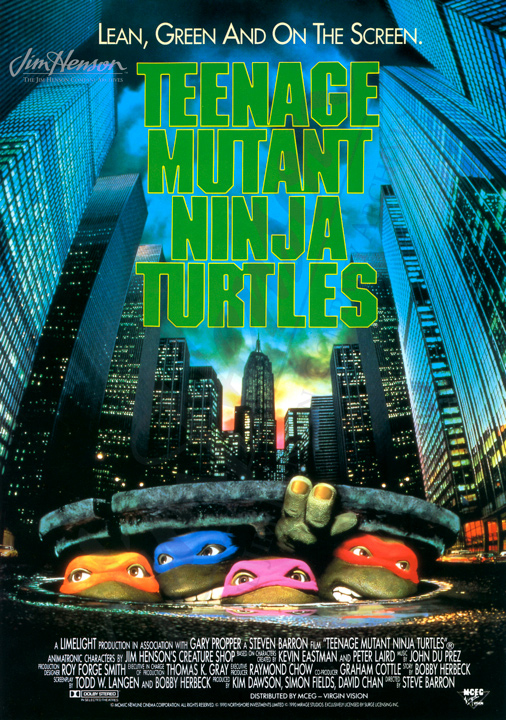
‘Teenage Mutant Ninja Turtles’ Movie Review
Nostalgia permits one to reflect on present tribulations with a halcyon past. It may, in the instance of Teenage Mutant Ninja Turtles, invoke a joy of an ostensibly simpler era of Walkman cassette tapes and the thrill of $10 large pepperoni pizzas. But from a more cinematic perspective, nostalgia harkens us to remember when commercial filmmaking had efforts at technical mastery – specifically in screenwriting and direction. In an era of filming before digital cameras, Teenage Mutant Ninja Turtles gives us an appreciation of reality through the active use of puppeteering and film extras instead of scripted computer graphics which bludgeon the audience with impossible and mostly nonsensical spectacle.
The film is rather short and sweet. It introduces us to a band of mutant ninja turtles living in sewers who constantly train under a similarly mutated rat sensei named Splinter. Their joie de vivre stems from their adolescent innocence, which both provides for terrific comedy and also their commitment to justice in the back alleys of New York City. Media, here, is seen as pervasive as ever, where the on-screen television is an all-mighty cultural authority to direct righteousness onto Earth. Indeed, April, the lead actress, is a news reporter who irks the police for trying to understand a recent crime wave. Her run in and comfort with the turtles – over pepperoni pizza of course – commits her to solving the mystery as a team.
The director, Steve Barron, is impressive with his serious dramatization of a children’s comic and animated series. His cinematic grammar which provokes moments of airy suspension, are rendered moot with later film efforts which rely heavily on digital animation. Often times it is limitations imposed upon creativity which breathe a purer originality out of the necessity for simplicity. And that is what is missed most about pre-digital cinema. The screenplays and ultimately art produced have a focus on staging and story rather than razzle and dazzle. True, The Teenage Mutant Ninja Turtles is a linear story line. It has a generic three acts. But what flesh covers the scripting vertebrate is irreverent without a self-aware absurdity like we see with ironic fourth wall breaking which has grown to the point of tedium this century. It further affirms the pricelessness of family bonding – indeed as a critical resolution to the film’s ending – which is now voided in contemporary mass commercial art; as well as a clever depiction of the predestination of evil.
Yes, Shredder, the main villain, enjoys betrayal. He enjoys exploiting young people – including the ninja turtles. But, as Splinter poetically justifies, his conscience, which leads to his inevitable demise is one which is formed out of dishonorable deeds. The affirmation of life is one which forever is a choice between the two destinies, of honor and dishonor, of truth and falsehood, of light and dark. And it is a marvelous world to be reminded of that the choice of light is one of talking turtles named after Renaissance Men who love pizza.

